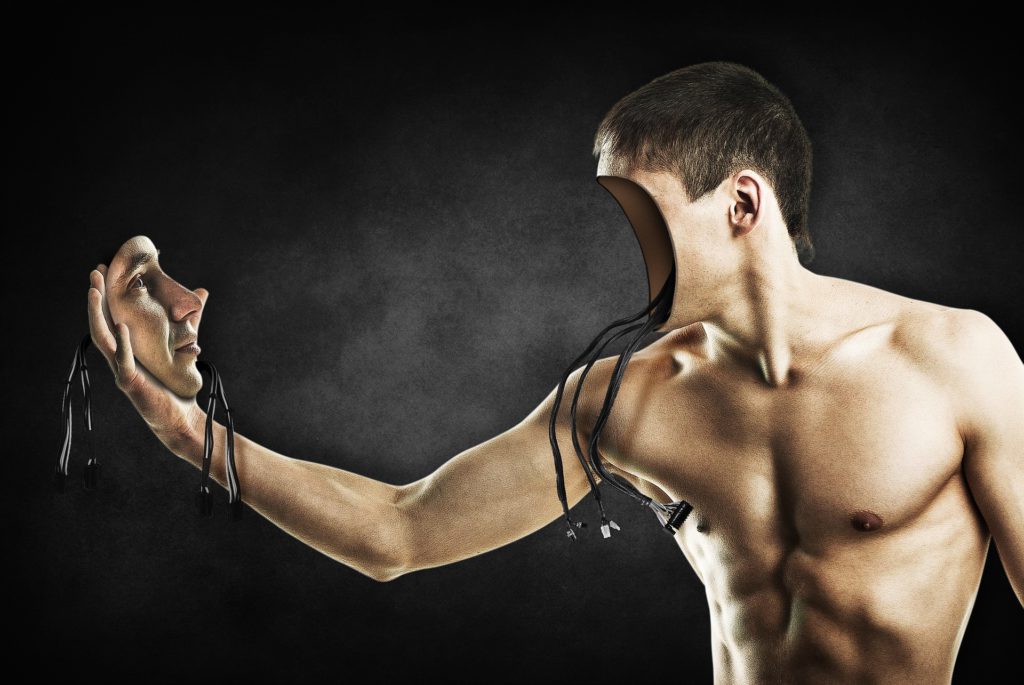The Tools
Bodylanguage
Nonverbal Communication
Micro Expressions
How Well Can You Read People?
People who do well in decoding nonverbal cues have an advantage over the pack.
Research has shown consistently that they are better socially adjusted, less hostile and manipulative, more tolerant, more helpful to others, more open to experience, more conscientious, more extraverted, more socially outgoing, les shy, less anxious, more warm, more emphatic and more popular.
People who do well in decoding nonverbal cues have more satisfying relationships, are better able to judge others and consequently outperform others at the workplace and in negotiations
If you are curious how well you can read other people you can find if out in our quiz below.
Everything is Communication
How women communicate peak fertility
Rituals
There is more to non-verbal communication than what is found in popular literature, as it extends into areas that up until recently have been considered imperceptible. One illustrative example is found in the courtship rituals between men and women.
Although ovulation has long been presumed to be concealed, various recent studies show that women communicate their fertility with cues relating to their social behaviours, body scents, voices, physical appearance and mate-specific conduct and preferences.
Near ovulation women prefer men displaying indicators of good genes. Deep voices, square jaws, athletic body structure and competitive behaviour indicate high testosterone levels in men, and women at the peak of their monthly fertility cycle report greater attraction to these men, especially if their primary partners lack these traits.
This is why, at an unconscious level, at peak fertility women increase self-grooming, ornamentation (jewellery) and the use of cosmetics and other appearance-related products. They behave and dress more provocatively, show more skin, they increase their voice pitch and slow down their gait. Additional physiological cues are shifts in women’s body odour, facial skin tone, waist-to-hip ratio and an increase in facial and bodily symmetry. All of this is communication and serves as a means to an end.
Are men receptive to these non-verbal cues?
Women’s fertility and men’s ratings of women’s attractiveness are linked. Men rate attributes such as a woman’s scent, her voice and her face as most attractive during periods of peak fertility. Scents of women near ovulation produce higher testosterone levels in men, and men rate the scent of a woman at this stage in her cycle as more pleasant smelling than scents from a control group in a different stage. There are also a number of observable effects these cues can have on men’s behaviour, such as an increase in risk taking, aggressiveness, male–male competition and especially jealousy.
Remember, everything is communication!
Non Verbal Communication
Non-verbal communication means different things to different people, but it is often confused with body language. From a behaviour analyst’s perspective, this definition is too narrow and does not capture the true potential that this multifaceted discipline offers.
Unconscious drives and emotions often find their expression in non-verbal communication channels other than body language. These channels can help us to discover what people really think and feel and in doing so allow us a glimpse behind the masks that we are wearing most of the time.
For the trained observer the signals of the non-verbal communication channels are especially valuable, as they often escape the filter of volition and conscious awareness. In a very real sense, they can provide a window into the soul.

Body Language
The terms “body language” and “non-verbal communication” are often used interchangeably. This is understandable given the popularity of this topic and the countless books that are at the root of this confusion. In fact, body language is only one of the communication channels under the umbrella of non-verbal communication.
As this picture demonstrates, we humans can express deep and complex emotions with our bodies. We can read these emotions if we are aware enough and if we know what to look for, but it takes some conscious effort and a little detachment from oneself. Often it seems that our minds are distracted by the myriad of trepidations our busy lives entail, so that we pay more attention to language and the spoken word.
Our amygdalae, however—two almond-shaped sets of neurons in the brain’s limbic system—are responsible for our emotions, and they react keenly to even the slightest gestures and expressions. The symmetry, synchronicity, duration, and on-and-off sets of expressions, postures and gestures, and their congruence with what is said—these all determine how our subconscious perceives and reacts to a message.
Myth Buster
Emblems & Illustrators
Gestures
Gestures have been of interest to us since ancient times as they can emphasis the words we speak or contradict them. Whenever our bodies challenge what we say, our subconscious takes notice.
Micro Expressions
Conscious or not, we all manage our own facial expressions so as to communicate our genuine or masked emotions. At the same time, we scan the faces of the people around us to gauge their internal emotional states. Despite these facts most of us are not sophisticated enough to distinguish the false from the true no matter how skilled we think we are.
Micro Expressions, fleeting movements of the face lasting no longer than 1/25 of a second, are of special interest when it comes to detecting deception. Some of our 43 facial muscles operate outside of conscious control and can leak our true emotions, especially when stakes are high, and anyone knowing what to look for can spot them despite their short duration.

the tone makes the music
The Voice
The analysis of the acoustic properties of the voice can provide accurate insights into the emotional states a person is experiencing. The voice’s perpetual oscillations of pitch and volume can convey a parallel meaning to the spoken words, with implications often unintended by the speaker.
